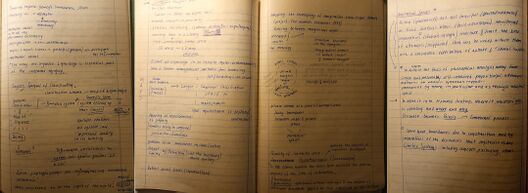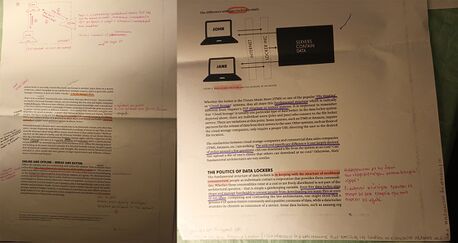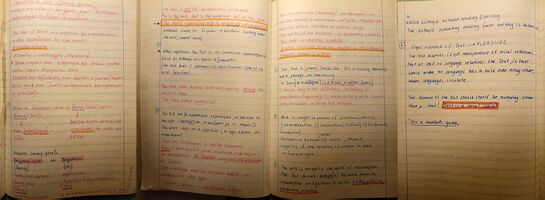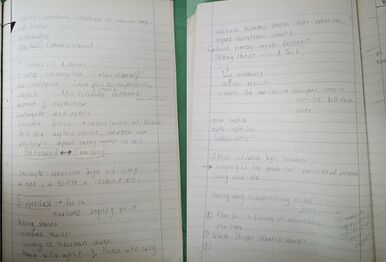The Methods, the Readers, the Texts, the Sayings
W H Y | W H A T | H O W
Bootleg Library
https://hub.xpub.nl/bootleglibrary/shelf/96
Mapping Beyond Dewey's Boundaries: Constructing Classificatory Space for Marginalised Knowledge Domains | Hope A. Olson
Radical Tactics of the Offline Library (It's a numbers game) | Henry Warwick
Image Music Text (From Work to Text) | Ronald Barthes
Donna Haraway's response to Ursula Le Guin's Carrier Bag
Moya Davey, Fifty minutes
https://www.ubu.com/film/davey_50.html
Fugitive Libaries | Shannon Mattern
The Undercommons: Fugitive Planning & Black Study
She Unnames Them | Ursula K. Le Guin
Ursula K. Le Guin 1986 The Carrier Bag Theory of Fiction
Mutual Aid | Peter Kropotkin (1912)
Hyperworld | Ted Nelson
Thinking in Boxes
Exploratory Programming: Calculating and using Jupyter Notebook
Un-/Learning Archives in the Age of the Sixth Extinction
https://wholelife.hkw.de/un-learning-archives-in-the-age-of-the-sixth-extinction/
"In thinking more about gardens as overlapping sites of history, legacy, and testimony, sustainable gardening systems, such as seed keeping and perennial plantings become metaphorical approaches to reconnecting with distant relatives and beloved homelands. Gardening is important, but seed saving is crucial. Gardeners frequently save seeds as an attempt to grow a better crop the next year, save money, and in order to trade with others. However, a seed holds more than its genetic logic. Seeds hold memory. For many, seeds are vessels for belief and hope.
Over the years, the gardener maintains a reciprocal exchange with plants—cultivating an intimate relationship to the earth, preserving memories of years before, and observing their own personal transformation in the process. How can gardening serve as a reminder of one’s cultural heritage and identity? How can seed saving make stories and traditions more widely known? How can seeds bring invisible legacies to the forefront? Seeds are relatives. They prompt discussions on creation, belonging, and heritage. Seeds are a living archive and therefore ask us how archives can become more participatory and serve as a transmission of history rather than being frozen or fixed. Seeds communicate physical, historical, and cultural relationships as they relate to agriculture. Some of us collect and carry seeds in an attempt to cultivate our “homelands” elsewhere. There is a growing inter-generational movement of Indigenous peoples who are leading the rematriation of seeds in order to repair and heal after more than 500 years of separation, removal, and colonization. Seeds are coming home."




